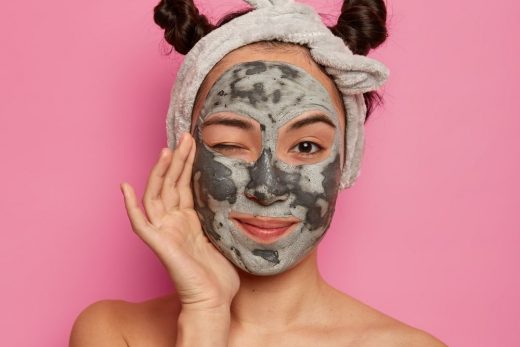Marble floors have symbolized timeless elegance for hundreds of years. The variety in marble’s natural veining and color blends beautifully with decorating styles from mid-century modern to traditional to Art Deco. While marble flsoors are extremely durable, they do require regular cleaning and care with the right products and tools to keep them looking their best.
How Often to Clean Marble Floors
Dust and loose dirt are enemies of marble floors because they can cause minute scratches that dull the finish and allow troublesome stains to penetrate the marble. Floors should be dry dust-mopped at least twice a week.
While most marble floors are sealed to help prevent staining, spills—especially acidic liquids—and obvious mud or dirt should be cleaned away immediately. Deeper cleaning of marble floors is only required about once a month.
Important Factors to Consider
Marble is a calcareous, alkali stone that reacts with any acidic substance. This chemical reaction can lead to permanent discoloration. This is why choosing the right cleaning product is crucial.
Harsh cleaners like ammonia or chlorine bleach can permanently mar the finish of the marble. Avoid any cleaners that feel gritty or promise to “scour away” dirt. Acid-based commercial cleaners even those recommended for granite or homemade mixtures that contain distilled white vinegar or lemon juice should be avoided completely.
Do not use cleaning or waxing products that promise to clean and shine. These are not formulated for marble and can leave it looking dingy and overly slippery.
What You’ll Need
Equipment / Tools
Dust mop
Damp mop
Mop bucket or sink
Microfiber cloths
Tennis ball
Materials
Mild soap with a neutral pH (pH 7) or stone soap formulated for marble
Water
Hydrogen peroxide
Cornstarch
Instructions
Instructions for Routine Cleaning Marble Floors
Clean Up Spills Immediately
When spills occur, they should be wiped away immediately. Even with a protective sealant, acidic messes like fruit juices, soft drinks, or vinegar-based condiments can cause etching. Muddy footprints should be removed as soon as possible to prevent the embedded grit from scratching the marble. Use a damp microfiber cloth to remove solid particles and blot up the liquid. Try not to make the stain larger by smearing. Follow-up with a quick rinse with a clean damp cloth and finish by drying the area well with a microfiber cloth to prevent spotting and slippery areas.
Trap Dust and Dirt
A dry dust mop or a mop with disposable dry sweeper cloths are the best tools for trapping dust and loose dirt on a marble floor. Do not use any type of dusting spray on the mop. A good rule of thumb for how often to clean is that a marble floor should be dry dusted at least once per week per person living in the home. For a family of three, this means dry dusting three times per week to keep marble scratch-free.
Warning
It’s best to avoid using a vacuum with a beater bar on marble floors. The action of the brush, although helpful for carpet, can scratch the surface of the marble. Skip any stiff-bristled brooms, too!
Instructions for Deep Cleaning Marble Floors
Marble floors should be deep cleaned at least monthly or more often if needed in high-traffic areas.
Dry Dust First
Always use a dry dust mop to start the deep cleaning task to trap loose dust and debris. If you skip this step, you’ll just be pushing around excess dirt with your damp mop.
Mix a Cleaning Solution
In a bucket or sink, mix a solution of warm water and mild, neutral pH soap. Follow the product label for the correct ratio of water to the cleaning agent.
Fill a second bucket or sink with clean water to use for rinsing the floor.
There are specialty soaps formulated for marble or you can use a very dilute solution of just a few drops of dishwashing soap per gallon of water.
Mop and Rinse
Dip a soft, cotton or microfiber mop in the cleaning solution and wring well. The floor does not need to be sopping wet. Work in a small area, rinsing the mop frequently to remove dirt.
As you complete the area, dip the mop in plain water and carefully rinse the freshly mopped floor to remove any soapy residue left behind. This is an important step to keep the marble from yellowing and looking dull.
Treat Tough Stains
If the cleaning solution did not remove every stain, try these methods:
Scuffs: Gently rub the scuff with a dry tennis ball.
Ink Stains: Saturate a soft cloth or paper towel with rubbing alcohol and place it over the stains. Leave for a few minutes and then blot away the ink. Repeat until the ink is removed and rinse the area well with plain water and buff dry.
Organic Stains: Saturate a soft cloth or paper towel with 12 percent hydrogen peroxide and place it on the stain for about 10 minutes. Check the stain, if it is gone, rinse the area well with plain water, and buff dry. If the stain remains, repeat the steps and allow the hydrogen peroxide to sit for up to 30 minutes.
Oily Stains: Blot away as much of the oil as possible and use a mixture of warm water and a few drops of dishwashing liquid to clean the area. If the stain remains, sprinkle the oily area with a thick layer of cornstarch. Leave the cornstarch in place for at least four hours to draw the oil out of the marble. Repeat until the stain is gone.
Water Spots: Lightly dampen the floor with plain water. Use several soft microfiber cloths to dry and buff the floor using large, circular motions.
Dry and Buff the Floor
As a final step, use a soft, microfiber cloth to dry and shine the floor. Working in large circles leaves your floor with a highly polished look. Removing excess water is also important to prevent stains. Some marble contains iron oxide particles that when subjected to water for too long can cause rust stains that are nearly impossible to remove.
Tips to Keep Marble Floors Looking Good Longer
Use non-skid doormats inside and outside entrance doors to trap scratch-causing grit.
Add pads to furniture legs to prevent scratching and never drag heavy furniture across the floor.
Choose honed, tumbled, or brushed marble for areas like bathrooms or kitchens to reduce falls from slippery floors.
Avoid harsh cleaners and floor care tools.
Use a sealant recommended for marble floors and reapply as recommended by the manufacturer.





